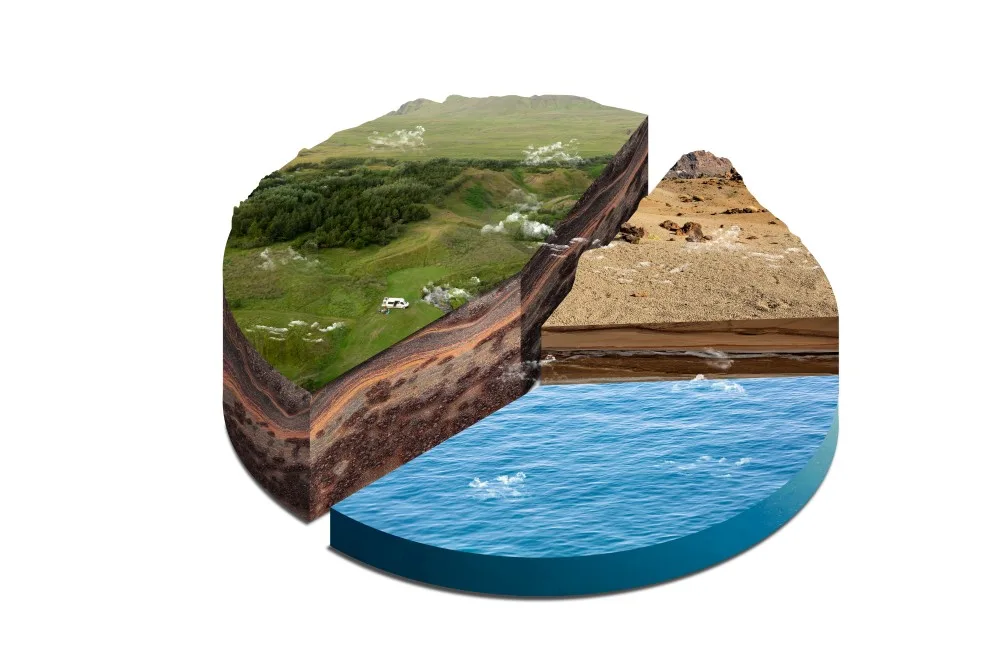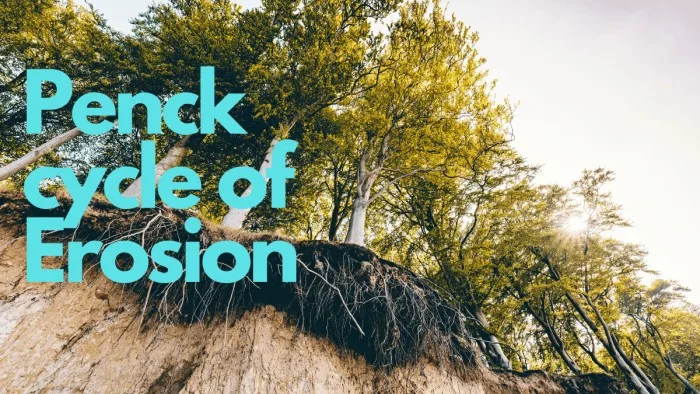Penck Cycle of Erosion
German geomorphologist Penck provided an alternative model of the cycle of erosion. It describes the cycle of erosion concerning Geomorphological phases. Phases are described concerning a balance between the rate of upliftment and to rate of erosion. The main goal of Penck’s model of the morphological system was to find out the mode of development and causes of crustal movement based on exogenetic processes and morphological characteristics. The reference system of Penck’s model is that the characteristics of the landform of a given region are related to the tectonic activity of the region.
Based on the phases following 3 phases are identified by Penck:
- Phase of increasing landform and slope
- Phase of constant landform and slope
- Declining landform and slope
According to Penck cycle of erosion starts on a landform which is known as primarumpf (initial landform) It is featureless under goes through the process of upliftment under the influence of endogenetic forces. However, with time rate of upliftment increases and it becomes rapid.

The phase of Increasing Landform
Aufsteigende Entwickelug– In this phase rate of upliftment exceeds the rate of erosion. Thus, there is an increase in the altitude of the summit as well bed, it is dominated by vertical erosion and transportation. The slope increased with the 1st phase of the cycle of erosion. Convex v-shaped valleys are formed.
Phase of constant
Gleichformige entwickelung– In 2nd phase rate of vertical erosion of the bed is balanced with the rate of lateral erosion. Thus, the bank and bed are eroded at the same rate these valleys are vertical and steep. It is associated with gorges and canyons. This phase is further divided into 3 sub-phases:
Since the rate of upliftment exceeds the rate of erosion, there is a rise in the altitude of the summit and bed however this ratio is relatively less compared to the first phase. So the rate of rise of altitude and summit relatively declined.
The rate of upliftment equals the rate of erosion. There is no change in the altitude of the summit and bed. Landform attains maximum altitude concerning summit and bed.
The rate of erosion exceeds the rate of upliftment gradually upliftment stops then there is a decline in the altitude of the summit and bed.
The phase of declining landform and slope
Absteigende entwickelung– There is no upliftment of the landform lateral erosion with deposition dominating landform development and slope. There is the declining altitude of the summit, altitude of the bed, and slope. This process of slope development is called slope replacement which combines both slope declines with parallel retreat. With the erosion of the bank lateral erosion becomes wider through retreating debris generated by lateral erosion. The vertical slope is called the gravity slope, this shortened and retreat backward slope gradually declines and length increases component at which gravity slopes joint boschungen is called nick-point. 3rd phase ends with Endrumph which is a featureless plain with low altitude and slope with scattered lowland called inselberg.
Merit of Penck cycle of Erosion
- This alternative model is best suited to describe landforms and slopes as it is based on a continuous interrelationship and interdependence between endogenetic and exogenetic forces.
- This model provides important structural and endogenetic process information on land and slope.

